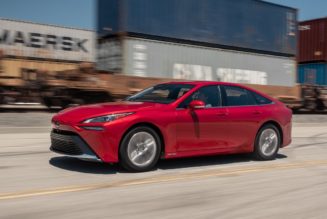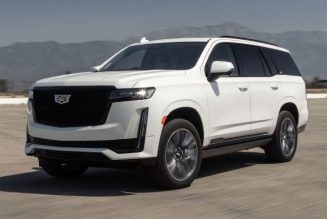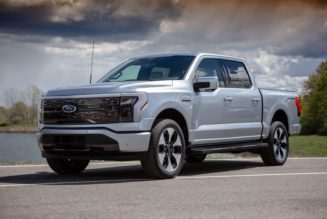In honor of Hans Mezger’s life, we’re republishing our June 2011 first drive of the Porsche 911 GT3 RS 4.0—the model that bid adieu to the famed Mezger engine in Porsche’s road-going cars.
Porsche churns out so many run-out editions of the 911 that collectors must be feeling pretty gouged by now. There’s the 911 Carrera 4 GTS, the 911 Black Edition Cabriolet, the 911 Turbo S Edition 918 Spyder—the list goes on. Seems like every combination of spec and paint becomes a model in its own right. We are just waiting for a narrow-body rear-wheel-drive Turbo Targa Orange Stripe edition.
Instead, along comes the real deal. Not just the last 997-series 911, but the ultimate RS, and the roadgoing swan song for the magnificent Mezger flat-six. The 911 GT3 RS 4.0 . . . now that’s what we call a collector’s car.
It doesn’t just contain a mix’n’match of the very best body, aero, and chassis tweaks from the existing GT3 RS and GT2 RS, plus some competition parts in the suspension. Oh no, that would be the usual Porsche cheekiness. This time you get an actual new engine. A 493 horsepower, naturally aspirated, 8,500-rpm howler, that’s just waiting to propel this sub-3,000-pound sled to 100 miles per hour in under eight seconds.
While all mainstream 911s now have an entirely different flat-six (even the Turbo), Porsche Motorsport’s Mezger engine powers 911 GT3 and GT2 models, as well as the track 911s. It began life back with the 1996 Le Mans Porsche GT1. But continuing with two engine families makes little commercial sense, so it’s a sad goodbye to this one.
The new GT3 RS 4.0 shares its block, long-stroke crank, and titanium rods with the track-only four-liter 911 GT3 R and RSR. It also gets a road cylinder head with variable cam timing and variable manifold, plus a catalyzed exhaust.
But those road elements aren’t the same as the ones on the RS 3.8 engine—oh, no. They’re redesigned for even higher gas flow. Valve timing is different; the inlet manifold has wider, shorter runners, and is a thinner casting; the air filters are track-type items; the compression ratio drops (yes, drops) to 12.6:1 from 13.0; and the exhaust cat has bigger voids, necessitating the use of hideously expensive new metals to keep the gas scrubbed clean. As a measure of the achievement, power output per liter is actually higher than the 3.8.
More Videos
We told Porsche GT development chief Andreas Preuninger that this is an implausible effort for a run-out car, done in a short time frame. “This isn’t a lifecycle-plan car,” he said. “It was a last-minute decision. I got the board members to say yes to it when they were in a good mood after we did so well in the Nürburgring 24 Hours last year. My team has been around for years; we’ve done all those GT3 and GT2 and RS cars. We know it so well. And everyone on the team wanted to do the car as a final salute. We wanted to get it perfectly right. Everyone was over-motivated.”
The headline power figure and the ability to rev to 8,500 snare your attention, but the most staggering aspect of this engine is actually its tractability. Mid-range lunge is marvelous, even if the peak number of 339 pound-feet doesn’t sound huge in the context of short gear ratios, lightweight, and a compact frontal area. In third gear, the way this thing flies between 4,500 and 8,500 rpm is scintillating. Plus, the utter progression of the delivery makes it vastly easier to take advantage of compared to the GT2’s ridiculous turbo surge.
Like the 3.8 GT3 RS, the 4.0 has a huge carbon-fiber rear wing, as well as front fenders and a hood of the same material. Doors are aluminum, and the rear side windows Perspex. That huge tail wing is the same as the 3.8’s, but it’s angled more steeply for extra downforce. This levers the front end upwards, hence those little dive plates ahead of the front wheels.
The engine has dynamic adaptive mounts, computer-controlled to lock the engine and transmission near solidly to the shell in hard corners. It shaves off another little bit of indecision from this already very decisive car. So do solid ball joints in all the lower joints of the rear suspension—new on the 4.0 over the 3.8.
A roll cage and ceramic brakes will be fitted to most of the 600-odd production run, but they’re options. The stereo and air conditioning are no-cost options.
The obsessive weight savings include a Porsche crest sticker instead of an enameled metal hood badge. Mind you, the mass of the stripes on the rest of the car probably offsets that weight loss. This machine is not modest about its identity.
Knowing its pedigree, you can take as read its huge performance and gecko-like grip. What matters isn’t the numbers; it’s the manner of their delivery.
On the powertrain side, you get a yowling pure-voiced slug of flat-six sound and instant throttle response. Being able to micromanage the power delivery really does improve the handling of a machine where precision is all. The competition transmission’s short-shift gear lever further knits the driver and car together.
And its handling. Oh, boy. The steering is sharp and absolutely loaded with feel. It has lots to communicate because this isn’t a car that clings to a neutral attitude. Your inputs and the tightness of the curve dictate whether there’s understeer or oversteer, and the little suede-clad wheel keeps you hardwired into it all. Both the front tires and the 325/30 ZR 19-inch rear rubber relinquish their grip with early, progressive warning, so you can do something to sort it out. If you don’t, then the high-threshold, but eminently smooth, stability systems will do your job.
Off-track, we took in some bumpy roadways, and still found a machine with reasonable ride compliance, epic traction even over undulations, and remarkably little inclination (for a 911 anyway) to get moved off-course by ridges and cambers.
Should you use it as a city car, the main annoyance will be the heavy clutch. Cruising the highways, the issues will be the head-banging tire noise via those solid suspension joints, and the fact your rear-view mirror is filled with nothing more than a large horizontal reminder that you bought the RS.
This website is not regulated by the SEC. Take independent advice, blah blah blah. But we will say that even at $185,000, this awesome car is surefire collectors’ gold. Anyway, we’re safe from redress, because the worldwide production run is already sold out.
| 2011 Porsche 911 GT3 RS 4.0 | |
| Base price | $185,000 |
| Price as tested | $205,000 (est) |
| Vehicle layout | Rear engine, RWD, 2-pass, 2-door coupe |
| Engine | 4.0L/493-hp/339-lb-ft DOHC 24-valve flat-6 |
| Transmission | 6-speed manual |
| Curb weight | 3000 lb (mfr) |
| Wheelbase | 92.7 in |
| Length x width x height | 175.6 x 72.9 x 50.4 in |
| 0-60 mph | 3.8 sec (mfr) |
| EPA city/hwy fuel econ | TBA mpg |
| On sale in U.S. | Currently |








